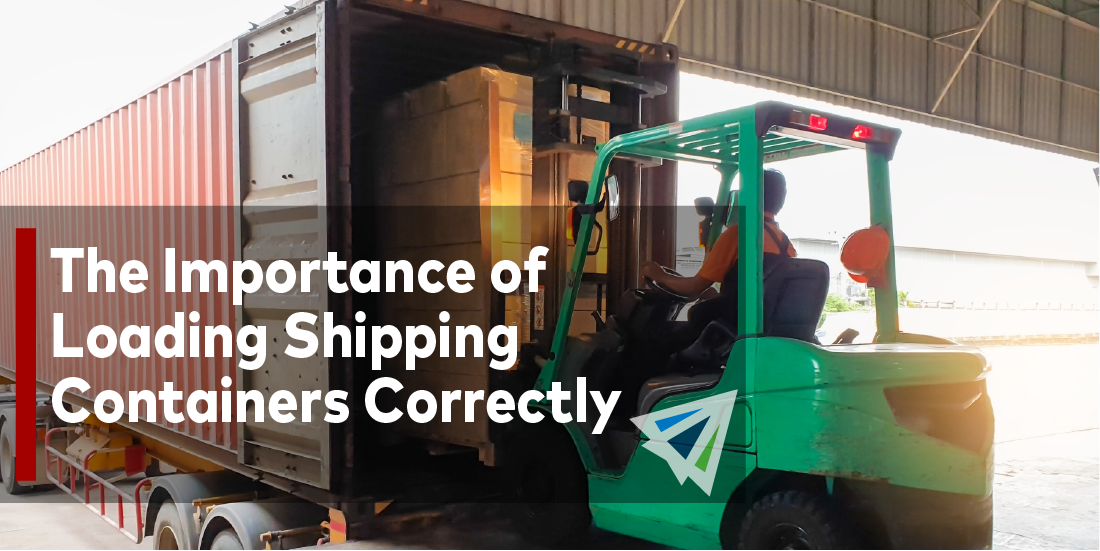Cargo damage isn’t fun for anyone, and unfortunately it happens more than any of us would like to think. With international shipments, your cargo is fingerprinted by so many different parties; from truckers to intermodal carriers, to ocean carriers, to draymen, and all of the same at the place of destination.
While there are occasional freak accidents that are the fault of the carrier, more often than not damaged cargo is actually the fault of shippers for unproperly loading their containers. If you want to mitigate the risk of cargo damage on your next shipment, it’s absolutely imperative that you devote time and attention to loading your shipping container correctly.
Loading Shipping Containers Correctly
There are a few things you should keep in mind when loading your shipping containers that can help in preventing damage to your cargo. For the most part, all of these tips come down to the same point – restrict movement within the shipping container. Empty space, gaps, and air pockets are not your friend. Even small gaps give cargo enough room to shift around, increasing the likelihood of your goods being scratched, broken, or damaged in one way or another.
With that in mind, here are a few practices you can implement for loading your shipping containers correctly!
Pack It Full
If you’re in the habit of leaving space in your containers rather than consolidating more cargo in each shipment, it’s time to break it (the habit; not your cargo of course…)
Packing an ocean shipping container full means that cargo has less opportunity to move around, which will reduce the overall risk for damage and scratching.
Say Goodbye to LCL Shipping
For some shippers, this isn’t an option and we get that. But Less Than Container Load shipping means your cargo is at the mercy of others to be properly consolidated and loaded. You can’t trust that workers at container freight stations are going to be filling every air pocket, nor can you trust the myriad hands that fingerprint your cargo in LCL shipping methods.
If it is at all feasible to ship greater quantities less frequently, you should start looking at FCL (Full Container Load) shipping. With FCL, you have much more granular control of how your cargo is loaded, and the shipment will be touched by significantly fewer parties while in transit.
Use Dunnage to Secure Cargo
Depending on the nature of your business, product, and shipment frequency, packing a container completely full may not be possible. It’s simple geometry! But if your cargo can’t pack the container completely full, you need to fill that space with something else; and that’s where dunnage comes in.
Dunnage just refers to any type of waste, filler material you can use to secure cargo. It could be bubble wrap, blankets, cardboard, planks, boxes, or several other materials. However, one of the best space fillers are dunnage bags.
Dunnage bags are large inflatable bags that are often made out of kraft paper. They may not sound super sturdy, but as long as your shipments doesn’t contain a bunch of sharp objects, they do the trick perfectly. They’re tall, wide, and can be inflated to the right size and placed between boxes in a container to push each side against the walls of the container.
Properly Blocking and Bracing Your Cargo
We’ve written a blog post about this that goes into more details, but the gist is this: blocking and bracing your cargo is an absolute “must” when it comes to properly loading shipping containers.
Blocking and bracing simply refers to the process of securing cargo within a shipping container to keep it from moving around. There isn’t any one way to do it either. Some people will build contraptions out of wooden planks and beams to secure cargo in one place. Other times, strapping cargo to each other and to the sides using additional materials can work.
The right type of blocking and bracing will vary greatly depending on what you are shipping, the volume, the density, and several other factors. The bottom line is – do not skimp out in this stage! Properly blocking and bracing your international shipping container is incredibly important.
Further Questions
Properly loading international ocean shipping containers isn’t easy! As you can tell, there are a ton of steps involved, and there’s no simple way to tell people what the right type of dunnage or blocking and bracing practices are for their specific situation. Everybody’s products, shipping frequency, and shipping practices are different.
Keep the above tips in mind, but if you are looking for direct instructions and tips for your specific scenario, please don’t hesitate to reach out to one of our team members and ask us! We help customers with properly loading their shipping containers all the time, and we’d be happy to help answer any of the questions you may have! We look forward to chatting with you.
